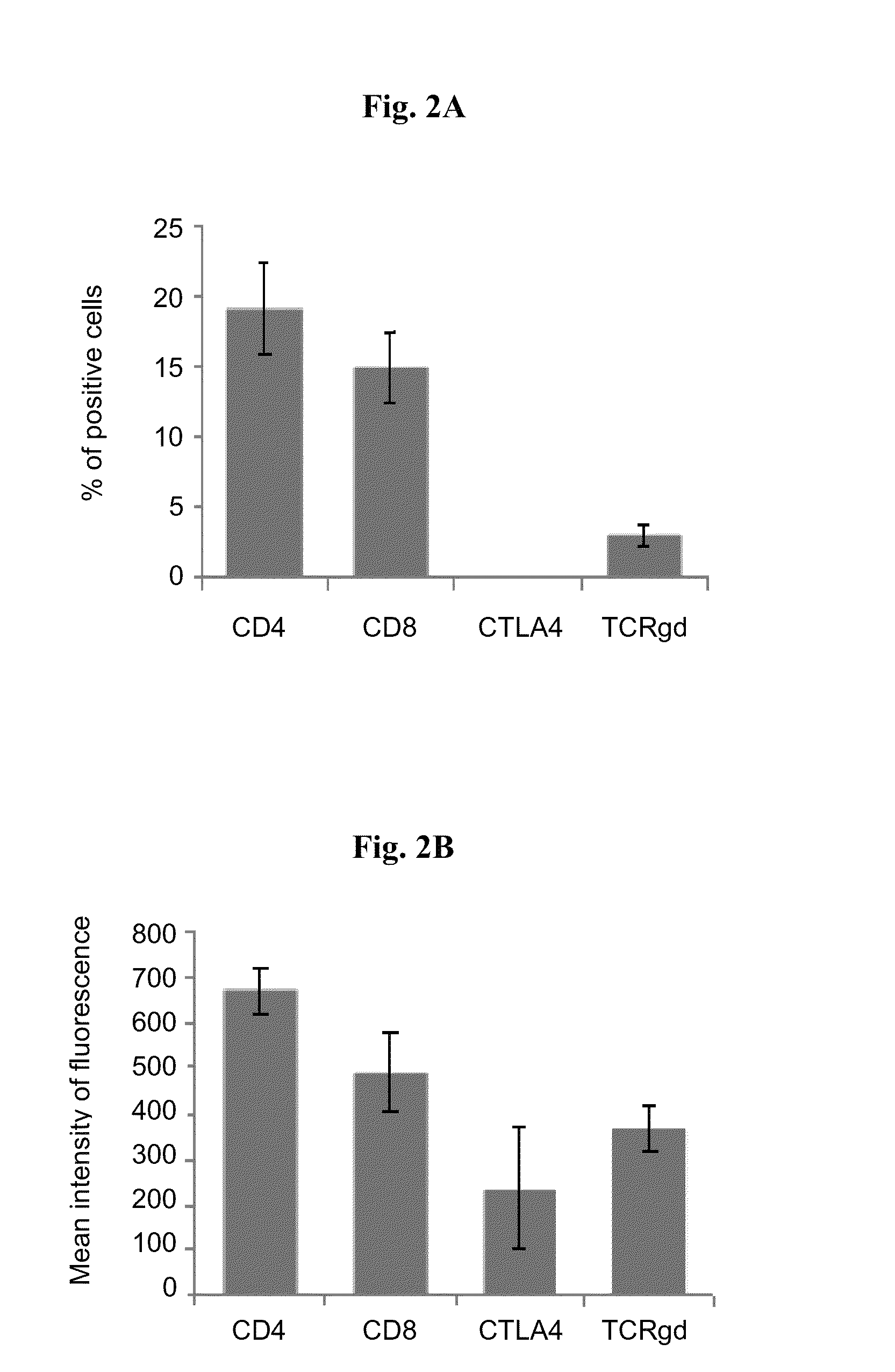Cellular markers for diagnosis of alzheimer's disease and for alzheimer's disease progression
a cell marker and alzheimer's disease technology, applied in the field of early diagnosis of alzheimer's disease and monitoring alzheimer's disease progression, can solve the problems of neurodegenerative diseases that are still unpreventable, incurable and largely untreatable, and no objective test is available for definitive diagnosis
- Summary
- Abstract
- Description
- Claims
- Application Information
AI Technical Summary
Benefits of technology
Problems solved by technology
Method used
Image
Examples
example 1
Accuracy and Robustness of Results in Healthy Volunteers
[0103]In this study, the distribution of single markers on total live peripheral blood mononuclear cells (PBMC) was tested, first using blood from young, healthy volunteers, so as to examine the accuracy and robustness of our measurements, and then in a controlled study comparing Alzheimer's patients and matched age controls.
[0104]Freshly isolated PBMC of healthy volunteers were stained with fluorescein isothiocyanate (FITC), phycoerythrin (PE) or allophycocyanin (APC)-labeled mononuclear antibodies against CD3, CD14, CD19, CD11c, CD34 and CD15, and the proportion and level of expression of each one of these markers were analyzed by fluorescence-activated cell sorting (FACS) (FIGS. 1A-1B).
[0105]Freshly isolated PBMC of healthy volunteers were double stained with APC-labeled mononuclear antibodies against CD3 and either FITC- or PE-labeled mononuclear antibodies against CD4, CD8, CTLA4 or TCRgd, and the percentage of cells expre...
example 2
Alzheimer's Patients Show Elevated Level of Both γδ-T Cells and CD14+ / CD16+ Cells in PBMC Compared with Healthy Controls
[0107]The studies described herein were conducted using about 32 blood samples, about half of them obtained from Alzheimer's patients and half of them obtained from age-matched healthy volunteers. In addition, 7 blood samples of amyotrophic lateral sclerosis (ALS) patients, another neurodegenerative disease, were analyzed. All blood samples were encoded, and analysis of the results was done blindly.
TABLE 2Differential count of peripheral mononuclearcells (% of total PBMC)AverageSDMinMedianMaxnMonocytesHealthy16.66.289.116.229.814CD14AD19.14.9511.618.529.915ALS18.94.313.417.325.77T-cells CD3Healthy53.911.9527.757.669.714AD57.59.3940.456.573.216ALS49.48.438.34863.17B-cells CD19Healthy8.23.422.88.017.014AD7.23.442.95.713.016ALSNDNDNDNDNDND
[0108]The proportion of PBMC population as measured by flow cytometry (monocytes-CD14, T-cells-CD3 and B-cells-CD19) are presented ...
PUM
| Property | Measurement | Unit |
|---|---|---|
| time | aaaaa | aaaaa |
| time | aaaaa | aaaaa |
| time | aaaaa | aaaaa |
Abstract
Description
Claims
Application Information
 Login to View More
Login to View More - R&D
- Intellectual Property
- Life Sciences
- Materials
- Tech Scout
- Unparalleled Data Quality
- Higher Quality Content
- 60% Fewer Hallucinations
Browse by: Latest US Patents, China's latest patents, Technical Efficacy Thesaurus, Application Domain, Technology Topic, Popular Technical Reports.
© 2025 PatSnap. All rights reserved.Legal|Privacy policy|Modern Slavery Act Transparency Statement|Sitemap|About US| Contact US: help@patsnap.com



